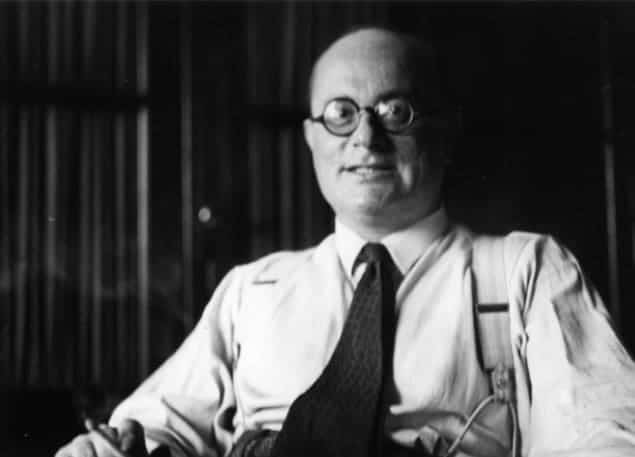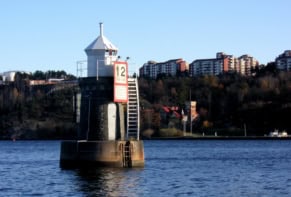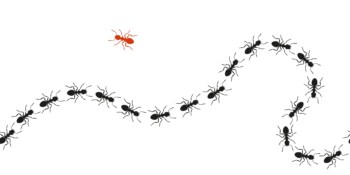Andrew Robinson reviews Nuclear Dawn: F E Simon and the Race for Atomic Weapons in World War II by Kenneth D McRae

In early 1948, less than three years after the end of the Second World War in Europe, Werner Heisenberg – the Nobel laureate and physicist leader of the failed German atomic bomb project – was invited to the UK as part of an attempt to repair relations between British and German physicists. While in Oxford, Heisenberg spent some time at the house of Francis (formerly Franz) Simon, a low-temperature physicist and one of the many German-Jewish scientists who had left Germany for the UK soon after Hitler came to power in 1933.
Like almost all German Jews, Simon had lost numerous members of his family, not to mention some scientist colleagues, in Nazi death camps. He had also worked enthusiastically in the British “Tube Alloys” programme to build an atomic bomb, and is credited with suggesting, in 1940, the basic process of separating fissionable uranium-235 from the more stable uranium-238 via gaseous diffusion of uranium hexafluoride through a porous barrier. (Initially, his wife’s kitchen sieve, hammered flat, served as the barrier.) This technique was subsequently adopted by the American-led Manhattan Project and further developed between 1942 and 1945, with some advice from Simon during his visits to the US.
In short, Simon was well acquainted with the difficulty of building an atomic bomb, and was under no illusions about what Hitler would have done with one if Heisenberg’s project had succeeded. As such, the conversation that took place between Simon and Heisenberg during the latter’s visit to Oxford must have been little short of surreal.
We know about this conversation because of a fascinating letter Simon wrote afterwards – a letter that is unfamiliar to biographers of Heisenberg, and is reproduced, apparently for the first time, in Nuclear Dawn, Kenneth McRae’s biography of Simon. The letter was written as a report to Simon’s colleague and friend Michael Perrin, a deputy director of Tube Alloys who had played a key role in corralling the chief German nuclear scientists at Farm Hall, Cambridgeshire, in mid-1945. During their enforced stay at the hall, British intelligence secretly recorded their revelatory private conversations – including Heisenberg’s incredulous and discombobulated reaction to a BBC radio report about the atomic bombing of Hiroshima on 6 August.
By the time he visited Oxford, however, Heisenberg’s attitude had changed. “Heisenberg claims that German scientists had no other wish than to prevent Hitler from getting the bomb,” Simon reported in his letter to Perrin. According to Heisenberg, he added, “They knew about everything, including the fast neutron reaction and the possibility of using plutonium, but all their actions were determined by their aim to mislead Hitler and the ‘high ups’ about the possibilities of a bomb. [Heisenberg] said that if he had gone to Hitler at the beginning of the war and told him what he knew, then he was quite sure that Germany could have developed the atomic bomb just like the Allies!”
When Simon openly doubted this account – without giving away his inside knowledge of the Farm Hall recordings – Heisenberg insisted on its truth. Simon’s analysis of the situation is astute: “I am quite sure that Heisenberg, like many other Germans, is a strictly honest person in his private life,” he wrote, “but as soon as the greater glory of the ‘fatherland’ is involved – and perhaps also his glory as a scientist – it is quite a different matter. Whether he now deliberately tells these falsehoods I cannot say. It is quite possible that … he has so persuaded himself that this picture is correct that he now seriously believes in it.”
Although Nuclear Dawn is the first book to include this letter, it is not the first biography of Simon. In 1966, 10 years after his premature death, Simon’s former secretary at Oxford’s Clarendon Laboratory, Nancy Arms, published a brief but exceptionally vivid portrait of him called A Prophet in Two Countries. Arms had the full support of Simon’s widow Lotte, who gave her access to his extensive personal papers (including his wartime diaries while advising the Manhattan Project), and Richard Rhodes drew on Arms’ account in his classic history The Making of the Atomic Bomb. Nuclear Dawn is similarly well informed: the author, McRae, is Lotte’s son-in-law, and he quotes from Simon’s diaries in great detail.
McRae is a retired political scientist, rather than a historian of science or a biographer. Accordingly, the strongest parts of his book are the sections about politics, especially those dealing with Simon’s dedicated but abortive attempts to encourage the British occupation authorities to de-Nazify German academe after 1945. Heisenberg’s arrogance and self-deception were, in Simon’s view, tolerable because of his brilliance, but he abhorred the retrograde reappointment of mediocre scientists known to have behaved opportunistically (or worse) before and during the war. In objecting to a proposal to invite an openly Nazi physicist, Eduard Justi, to the UK at the same time as Heisenberg, Simon argued to an unconvinced Nevill Mott: “What the world needs now are not so much good scientists – there are plenty of them – as honest people.” Simon always refused to accept the idea that science and politics belong in separate realms, which was the main excuse of his former German physics colleagues for their passivity in the Third Reich – as discussed in Philip Ball’s recent history Serving the Reich (see our review).
The weakest aspect of Nuclear Dawn is that it is neither a full-fledged biography nor a full study of the projects to build an atomic bomb in Britain, Germany, Japan, the Soviet Union and the US. Simon’s childhood and youth are virtually omitted, for example, and in a lengthy (if insightful) chapter comparing and contrasting the five national bomb projects, he entirely vanishes from view. A shorter book concentrating only on Simon would have worked better, and could perhaps have told us more about his other achievements, which included a British knighthood (added to the German Iron Cross, First Class he won for gallantry in the First World War) and his role in establishing what would eventually become the world’s most distinguished group in low-temperature physics. As the one-time head of the Clarendon Laboratory, Frederick Lindemann (Lord Cherwell) wrote of Simon in an obituary: “Not only was he supreme in experimental research; he had a clearer and more fundamental understanding of the basis of thermodynamics with statistical mechanics than any man since Einstein.” Despite its gaps, however, Nuclear Dawn is an invaluable source for historians of the Anglo–American atomic bomb project, especially as it concerns the life of a physicist who deserves to be more clearly remembered.
- 2014 Oxford University Press £35.00hb 284pp



